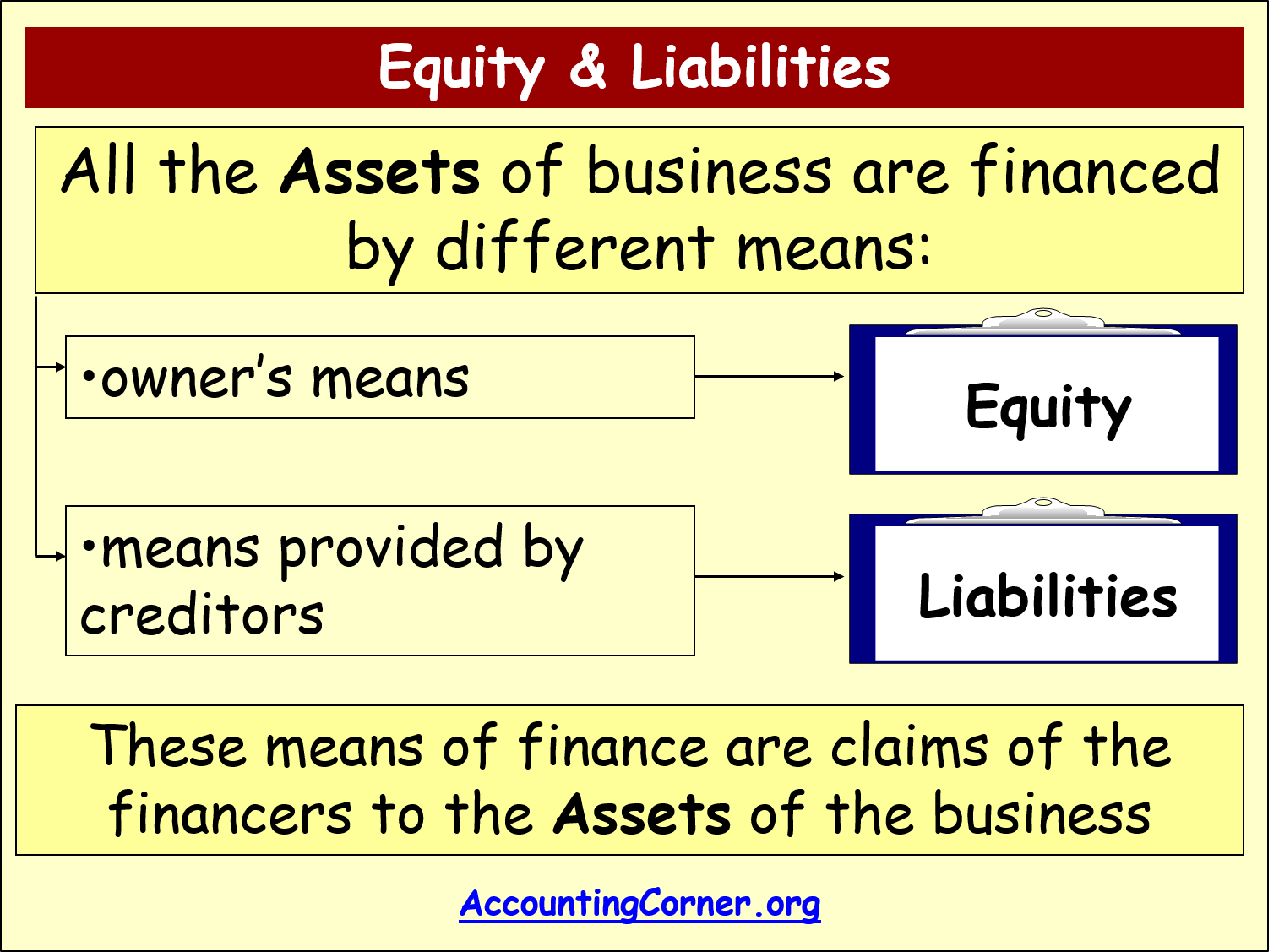
A trade receivable (asset) will be recorded to represent Anushka’s right to receive $400 of cash from the customer in the future. As inventory (asset) has now been sold, it must be removed from the accounting records and a cost of sales (expense) figure recorded. The cost of this sale will be the cost of the 10 units of inventory sold which is $250 (10 units x $25). The difference between the $400 income and $250 cost of sales represents a profit of $150. The inventory (asset) will decrease by $250 and a cost of sale (expense) will be recorded.
Assets, Liabilities, And Equity
For example, if a business signs up for accounting software, it will automatically default to double-entry. On 2 January, Mr. Sam purchases a building for $50,000 for use in the business. The impact of this transaction is a decrease in an asset (i.e., cash) and an addition of another asset (i.e., building). Liabilities are amounts owed to others relating to loans, extensions of credit, and other obligations arising in the course of business. Implicit to the notion of a liability is the idea of an “existing” obligation to pay or perform some duty. Cash (asset) will reduce by $10 due to Anushka using the cash belonging to the business to pay for her own personal expense.
Effects of Transactions on Accounting Equation
Every transaction is recorded twice so that the debit is balanced by a credit. For a company keeping accurate accounts, every business transaction will be represented in at least two of its accounts. For instance, if a business takes a loan from a bank, the borrowed money will be reflected in its balance sheet as both an increase in the company’s assets and an increase in its loan liability. The accounting equation relies on a double-entry accounting system.

Do you own a business?
- So, let’s take a look at every element of the accounting equation.
- We know that every business holds some properties known as assets.
- If an accounting equation does not balance, it means that the accounting transactions are not properly recorded.
- The accounting equation is a factor in almost every aspect of your business accounting.
- The assets of the business will increase by $12,000 as a result of acquiring the van (asset) but will also decrease by an equal amount due to the payment of cash (asset).
- The balance sheet is also known as the statement of financial position and it reflects the accounting equation.
The term capital includes the capital introduced by the business owner plus or minus any profits or losses made by the business. Profits retained in the business will increase capital and losses will decrease capital. The accounting equation will always balance because the dual aspect of accounting for income and expenses will result in equal increases or decreases to assets or liabilities. The balance sheet is also known as the statement of financial position and it reflects the accounting equation. The balance sheet reports a company’s assets, liabilities, and owner’s (or stockholders’) equity at a specific point in time. Like the accounting equation, it shows that a company’s total amount of assets equals the total amount of liabilities plus owner’s (or stockholders’) equity.
You can find a company’s assets, liabilities, and equity on key financial statements, such as balance sheets and income statements (also called profit and loss statements). These financial documents give overviews of the company’s financial position at a given point in time. The accounting equation ensures the balance sheet is balanced, which means the company is recording transactions accurately.
The accounting equation is based on the premise that the sum of a company’s assets is equal to its total liabilities and shareholders’ equity. As a core concept in modern accounting, this provides the basis for keeping a company’s books balanced across a given accounting cycle. The accounting equation states that a company’s total assets are equal to the sum of its liabilities and its shareholders’ equity. In its most basic form, the accounting equation shows what a company owns, what a company owes, and what stake the owners have in the business. These are the resources that the company has to use in the future like cash, accounts receivable, equipment, and land. As you can see, no matter what the transaction is, the accounting equation will always balance because each transaction has a dual aspect.
If the left side of the accounting equation (total assets) increases or decreases, the right side (liabilities and equity) also changes in the same direction to balance the equation. The accounting equation plays a significant role as the foundation of the double-entry bookkeeping system. The primary aim of the double-entry system is to keep track of debits and credits and ensure that the sum of these always matches up to the company assets, a calculation carried out by the accounting equation. It is based on the idea that each transaction has an equal effect. It is used to transfer totals from books of prime entry into the nominal ledger.
During the month of February, Metro Corporation earned a total of $50,000 in revenue from clients who paid cash. However, equity can also be thought of as investments into the company either by founders, owners, public shareholders, or by customers buying products leading to higher revenue. For information pertaining to the manual journals in xero registration status of 11 Financial, please contact the state securities regulators for those states in which 11 Financial maintains a registration filing. The difference between the sale price and the cost of merchandise is the profit of the business that would increase the owner’s equity by $1,000 (6,000 – $5,000).

